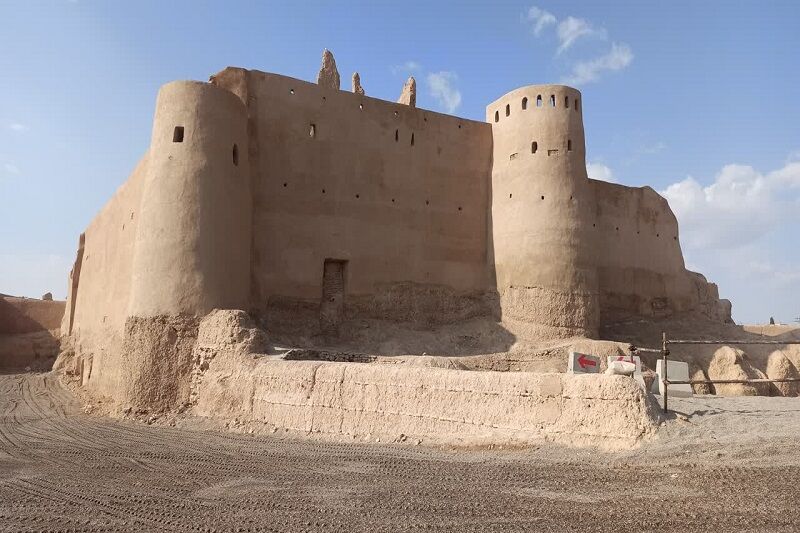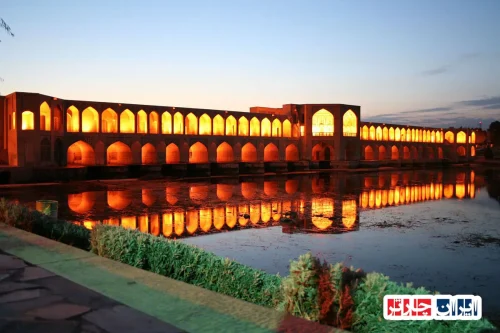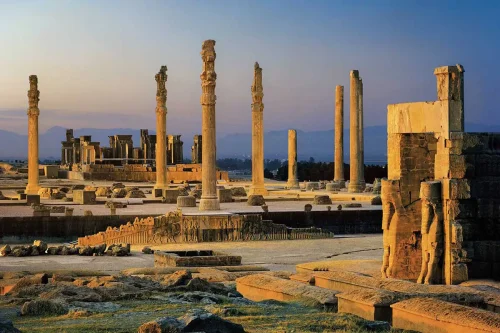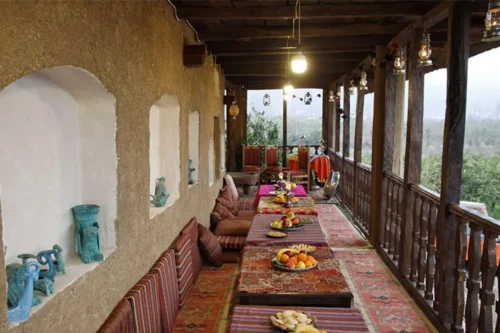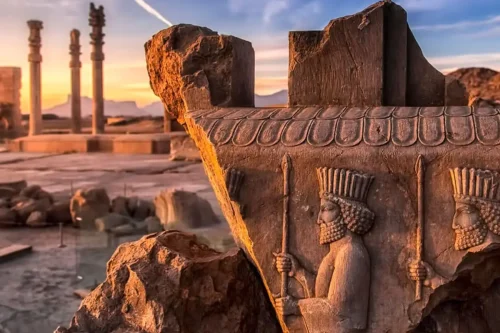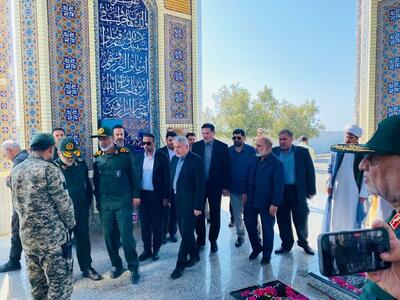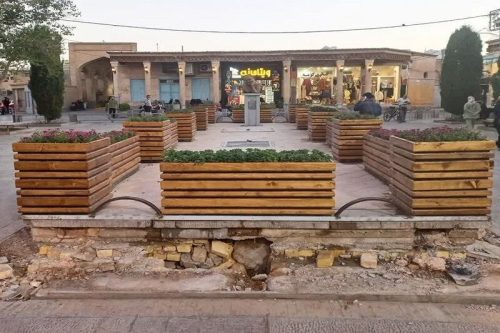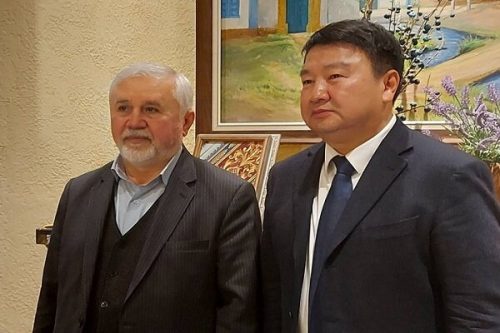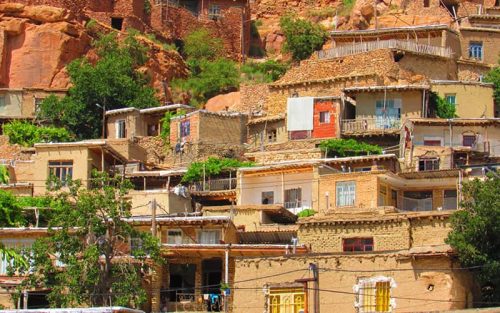News Source : https://www.irna.ir/news/85640868/%D9%86%D8%A7%D8%B1%DB%8C%D9%86-%D9%82%D9%84%D8%B9%D9%87-%D9%86%D8%A7%DB%8C%DB%8C%D9%86-%D8%AF%D8%B1-%D9%85%D8%B3%DB%8C%D8%B1-%D8%A7%D8%AD%DB%8C%D8%A7-%D9%88-%D8%AA%D8%A8%D8%AF%DB%8C%D9%84-%D8%B4%D8%AF%D9%86-%D8%A8%D9%87-%D8%B3%D8%A7%DB%8C%D8%AA-%D9%85%D9%88%D8%B2%D9%87-%D9%82%D8%B1%D8%A7%D8%B1
Narin Castle: A Journey from Restoration to Becoming a Leading Museum Site
The Historical Significance of “Narin Qal’eh” in Nain for Preserving Cultural Heritage
“Narin Qal’eh” in Nain is one of the most prominent historical landmarks in Isfahan province, playing a crucial role in the preservation and maintenance of the cultural heritage of this region. With its extensive history, this structure has witnessed various historical transformations and reflects the architecture and art of different eras. The conservation and revitalization of this fortress not only aids in protecting historical artifacts but also elevates the cultural and historical value of Nain.
The Process of Reviving “Narin Qal’eh” as a Museum Site
The revival of “Narin Qal’eh” in Nain as a museum site has been carried out through precise planning and multiple stages. Initially, expert archaeologists have studied and examined the original structure of the fortress to determine the best restoration and reconstruction methods. Modern restoration techniques have been applied to strengthen and revive the damaged sections of the fortress. This process continues with the aim of creating a suitable space for showcasing ancient artifacts and tourist attractions.
The Role of “Narin Qal’eh” in Nain’s Tourism Development
Transforming “Narin Qal’eh” into a museum site will significantly impact attracting tourists to Nain. This initiative not only helps increase the number of visitors but also enhances the economic level of the region by creating job opportunities and increasing tourism revenues. Both domestic and international tourists will become more familiar with the culture and history of Nain by visiting this historical site.
Financial Resources Allocated for the Revitalization of “Narin Qal’eh”
Significant financial resources have been allocated for the revitalization of “Narin Qal’eh” and its transformation into a museum site. The Cultural Heritage Administration of Isfahan province has allocated a budget of approximately 150 billion rials for the first phase of archaeological studies and protective restorations. This budget is provided through the management of available financial resources and financial support from various entities to ensure the completion of the project with the highest quality.
Archaeology at “Narin Qal’eh”: New Discoveries
Archaeological excavations at “Narin Qal’eh” in Nain have led to significant discoveries providing valuable information about the various historical periods of the region. These discoveries include architectural relics, ancient tools, and historical monuments that have enhanced the understanding of Nain’s history and culture. These findings will also play a crucial role in planning future exhibitions and further research.
Social and Economic Impacts of Transforming “Narin Qal’eh” into a Museum Site
Transforming “Narin Qal’eh” into a museum site will have significant social and economic impacts, in addition to cultural effects. It will create new job opportunities for the locals, increase local incomes, and strengthen the tourism infrastructure. Furthermore, enhancing public awareness about the history and culture of Nain through the organization of cultural and educational events is another positive impact of this project.
Challenges in the Revival Process of “Narin Qal’eh”
The revival project of “Narin Qal’eh” in Nain faces numerous challenges that require precise planning and effective management. These challenges include protecting historical structures from weather and natural conditions, securing sustainable financial resources, coordinating among various organizations, and attracting specialists. Overcoming these challenges by adopting appropriate solutions can significantly contribute to the success of the project.
Educational and Cultural Programs at the Future Museum of “Narin Qal’eh”
With the transformation of “Narin Qal’eh” into a museum site, numerous educational and cultural programs have been planned. These programs include permanent and temporary exhibitions, educational workshops for students and history and culture enthusiasts, and organizing cultural and artistic events. The aim of these programs is to enhance public awareness and increase community engagement with the cultural heritage of Nain.
The Future Vision of “Narin Qal’eh” after Becoming a Museum Site
The future vision of “Narin Qal’eh” after it becomes a museum site includes creating a dynamic and popular cultural and historical center in Isfahan province. By facilitating tourists’ access and providing appropriate amenities, it is expected that this historical site will become one of the main attractions in the historical regions. Additionally, with the development of archaeological and cultural research, “Narin Qal’eh” can play a significant role in preserving and expanding Iran’s national heritage.
FAQ
- What is Narin Qal’eh and where is it located?
- Narin Qal’eh in Nain is the oldest historical structure in the city of Nain, east of Isfahan. It is currently in the process of being revitalized and turned into a museum site.
- To which period does the Narin Qal’eh belong?
- Some people believe that the initial fortifications of Narin Qal’eh date back to the Parthian era, while others believe this historical structure belongs to the Sassanid period.
- What is a museum site and what is its purpose?
- A museum site is a place for presenting important archaeological findings and data. When a scientific excavation leads to the discovery of valuable immovable artifacts that cannot be transferred to a museum, the necessary conditions are created for public visits.
- What is the allocated budget for the revitalization of Narin Qal’eh?
- Approximately 150 billion rials have been allocated by the Isfahan Province’s Cultural Heritage Department for the first phase of archaeological studies and protective restorations of Narin Qal’eh.
- What will be the continuation of archaeological studies?
- The provision of necessary credits for the continuation of archaeological studies is being pursued by the Isfahan Province’s Cultural Heritage Department to support the revival of Nain’s historical structure.
- Is it possible to create accommodation and catering facilities at Narin Qal’eh?
- Considering that Narin Qal’eh is related to the Parthian period, it is not possible to create accommodation and catering facilities within it.
- Why is it necessary to turn Narin Qal’eh into a museum site?
- The only way to save and revive Narin Qal’eh is by transforming it into a museum site so that it can be made available for public utilization and archaeological findings can be presented within the defined framework.
- How will public access to Narin Qal’eh be achieved?
- With the transformation into a museum site, the general public can visit the findings from studies and archaeological excavations through a defined route and obtain the necessary information.
- What actions were taken for Narin Qal’eh in 2016?
- In 2016, protective restorations of Narin Qal’eh started in four phases, and some consolidation efforts also progressed.
- What were the measures taken for protection and reinforcement?
- After enclosing the massive structure of Narin Qal’eh, reinforcement measures, including strengthening the central core, foundation, and walls, along with the reconstruction of one of its towers, were carried out to achieve more stable conditions.
- Why were sections of the fortress collapsed, and how was this issue resolved?
- Sections of the fortress had collapsed, but with the funding received in three previous periods, reinforcement measures progressed, and protective restorations were conducted using compatible materials.
- What is the extent and external structure of Narin Qal’eh like?
- Narin Qal’eh covers an area of about 2,000 square meters, and the surrounding moat, which is part of the fortress’s protective structure, was taken over by people during the Qajar period, but a portion of the moat is being preserved as a model.
- What was the original function of Narin Qal’eh?
- The structure was originally a fire temple, but some archaeologists believe it also had military and administrative uses.
- How was Narin Qal’eh added to Iran’s National Heritage List?
- Narin Qal’eh was registered on Iran’s National Heritage List in 2001 and was previously owned by the Ministry of Economy and Finance, but its documentation was registered under the Ministry of Cultural Heritage, Tourism, and Handicrafts in 2016.
- How many periods have been allocated for Narin Qal’eh’s restoration budget?
- So far, the restoration budget for Narin Qal’eh has been allocated across three periods.
- What is the location and distance of Nain from Isfahan?
- The city of Nain is located 140 kilometers east of Isfahan.
- What is the difference of opinion regarding the historical period of Narin Qal’eh?
- Some believe it is older than the Parthian period, while others are of the opinion that it belongs to the Sassanid period.

